London Elections 2021: Top tasks facing the next mayor
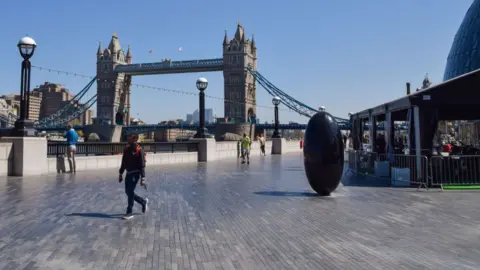 Getty Images
Getty ImagesEven without a global pandemic, the mayor of London would be facing a demanding term in office.
The mayor, who will run a £19bn budget, is tasked with keeping the capital running and making the streets safe. What will be the biggest challenges in the next mayor's in-tray?
The road out of Covid
London was at the epicentre of the first wave of the coronavirus pandemic and has borne the brunt of economic fallout worse than any other region.
An estimated 1.6 million workers in London were furloughed at some point during the pandemic - the highest rate in the UK.
Latest figures show more than half a million Londoners claim unemployment benefit, about 6% of the capital's population. Nationally about 4% of the population are on some form of out of work benefit.
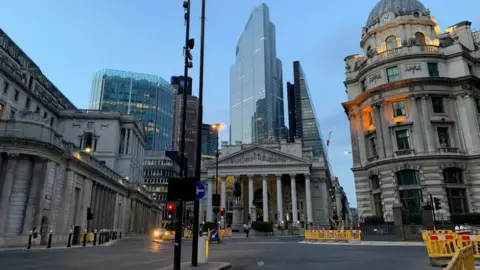
All of the main money-raising and spending decisions are made by central government, but the mayor has powers over "strategic planning". This means he or she can give permission to projects considered important to London's development.
Mostly, though, the mayor's office acts as a business hub, offering support and advice, and connecting companies with investors.
As a figurehead, though, the role is central to inspiring business confidence at home and abroad.
The mayor will need to use his or her influence to convince businesses and holidaymakers they're safe and welcome to visit - bringing money and jobs to the city.
Keeping London moving
Transport for London (TfL) has received £4bn in emergency funding just to keep running since coronavirus hit.
Since then TfL's finances have become a battleground between the mayor and the government.
Keeping TfL running and independent will be a key challenge over the next mayoral term.
Since the pandemic, TfL's fare revenues have fallen by 90% as passenger numbers plummeted to levels not seen since the 19th Century. This is a big problem, as fares make up the majority of TfL's funding.
London is one of the only cities in the world that does not receive government funding to support the operating costs of its transport network.

Analysis
Tim Donovan, BBC London political editor
Immense challenges lie ahead at City Hall after more than a year under the restraints of a pandemic.
The new mayor will need to keep a very close eye on public health. They will have to liaise with the NHS, local councils and the emergency services and be prepared to lead communications if, or when, things flare up again.
The economic recovery will gradually absorb more time and energy. Soon the furlough plaster will be removed - and scarring revealed.
Limited resources. Plenty of levers. The same old mayoral story.
Ahead lies a genuine test of leadership.
But how do you get the economic heart of the capital working again?
In practical terms, one huge milestone is what the new mayor can agree with the government over transport and how to finance it.
But there is a battle too about devolution, and whether the government intends to pull in or let out powers to run the capital.
On the two other major areas of influence - policing and housing - there will be no let-up in the scrutiny.
And to add to the mayoral "to-do" list will be getting their own house in order.
In the autumn, the machinery of the London government will be shifting from City Hall to a new headquarters in a building called The Crystal at the Royal Victoria Dock in east London.

Even before the pandemic, TfL was dealing with financial pressures on several fronts.
Much has been made about Sadiq Khan's flagship policy of freezing fares across the London Underground network for the duration of his term as mayor.
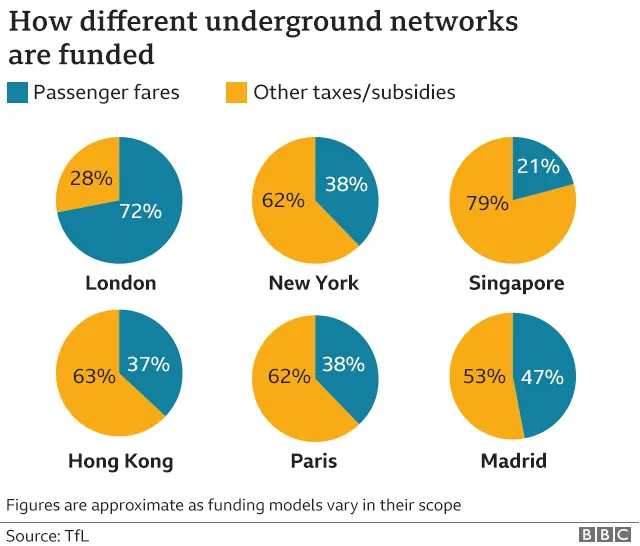
Although controversial at the time, the fares freeze has been fully paid for through TfL's efficiencies programme, outlined in its December 2016 Business Plan, according to City Hall.
The escalating costs of the delayed Crossrail project are also huge for TfL.
Europe's largest infrastructure project is two years overdue and £4bn more expensive than originally planned.
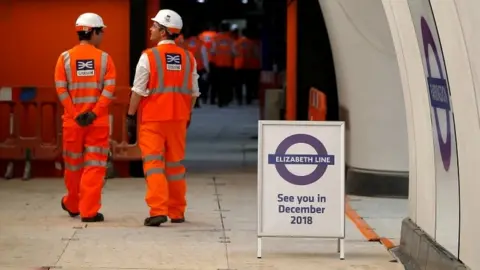 Reuters
ReutersThis comes at a time when TfL is being denied a source of income from fares, commercial advertising and retail units at stations.
Getting the project sorted will be at the top of any mayor's new list.
Tackling violent crime
Knife crime increased steadily over the past five years, before dropping drastically during London's lockdowns.
In 2019 the number of teenagers stabbed to death in the capital reached its highest level since 2008.
Violent crime - a broader category which includes murders, physical attacks and stalking offences - has been increasing in London since 2014, but has now dropped to about 7% below the level in 2016 according to Met Police figures.
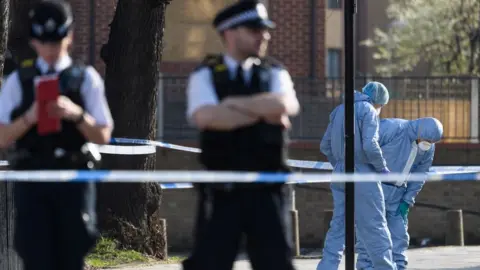 Getty Images
Getty ImagesCrime in London should not be looked at in isolation, though.
Knife crime in England and Wales is at a record high. There were 46,265 offences in the 12 months to the end of March 2020, with the figure having risen every year since 2015.
The mayor officially acts as the police and crime commissioner for London, which means the mayor has a role in setting out how London is policed and staffed.
As London emerges from lockdown, keeping London's streets safe will be a priority for any mayor.
Helping Londoners breathe more easily
This year, for the first time, London's air quality was recorded at an inquest as a factor in a person's death in the capital.
Ella Adoo-Kissi-Debrah, who lived near the South Circular Road in Lewisham, died in 2013 following years of asthma attacks and seizures.
Southwark Coroner's Court found that air pollution "made a material contribution" to the nine-year-old's death.
In an official "report to prevent future deaths" the coroner, called for national pollution limits to be reduced.
 PA Media
PA MediaThe capital's poor air quality was linked with about 9,000 premature deaths in 2015.
A report by City Hall found air pollution in London to have fallen over the past five years.
The number of people living in areas with illegal levels of nitrogen dioxide fell by 94% between 2016 to 2019, the report found.
The number of schools in such areas fell by 97%, over the same period.

LONDON'S ELECTION: THE BASICS
What's happening: On 6 May, people will vote to elect a mayor and 25 members of the London Assembly. Together they form the Greater London Authority, which governs the capital. You can register to vote online.
Why does it matter? The mayor has a £19bn budget, is responsible for transport and policing and has a role in housing, planning and the environment. The London Assembly holds the mayor to account. Find out more here.
Who is standing? There are 20 candidates running for London mayor and a full list can be found here.

But 24% of inner London roads still exceeded pollution limits, and figures show thousands of Londoners still breathe air that breaches pollution limits.
The successes have come at a price. City Hall says the improved air quality is due to programmes such as the Ultra Low Emissions Zone.
The scheme, which charges older and more polluting vehicles to drive into the capital, has been controversial. Many are calling for it to overhauled or scrapped.
Balancing the needs of road users and improving London's air quality could be a defining challenge of the next administration.
Homes for the future
City Hall estimates London requires about 66,000 new homes a year to provide enough dwellings to be ready for expected population growth.
This target has never been achieved in the 21-year history of the mayor of London.
In 2018-19, the last financial year with complete figures, about 36,000 new homes were built, according to the London Development Database. Of these 6,500 were affordable homes.
In the same year, planning applications for 82,000 new homes were approved.
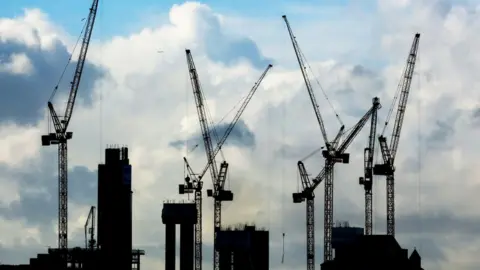 PA Media
PA MediaAccording to City Hall's assessment, about two-thirds of these new homes would need to be affordable homes - a broad category that includes social rented, affordable rented, and intermediate housing.
The mayor has few direct powers in relation to housebuilding, though.
Instead, the role sets targets on the number and type of homes built and works on these with local authorities and developers.
Finding inventive ways to increase the supply of new homes, particularly affordable homes, will be key for any future mayor.

- Voting: How do the elections work in London?
- Candidates: 'Why I should be mayor of London'
- A £17bn budget: What does the London mayor do?
- Postcode search: Who is standing in your area
- Simple guide: All the elections on 6 May

